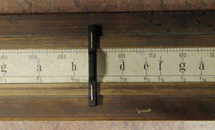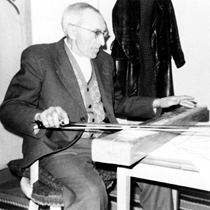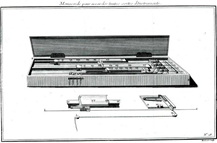We are still working with this site. Plaese, check the changes regularly. 
Ändra den här texten genom att klicka på "Redigera" |
Monochord
As the name indicates the monochord is an instrument equipped with one string stretched over a sounding-box. Its roots go down to antiquity when the mathematical interval relations with one another were discovered by using a monochord with a movable bridge that was placed in different positions of the string. Thus, monochords have been used as physical instruments to research and demonstrate the interval properties to our own times. The Swedish Academy of Science owned for example a monochord made here c. 1750 which was used at acoustical experiments. It was the time when the sound was researched physically and unequal, well-tempered systems and equal temperaments were much discussed and calculated. The function of ‘tuning aid’ was a closely related field of application where we today use electronic, computerized tuning devices.
A late, in Sweden wide spread variant of monochord is played with a bow. It was ‘invented’ by the rural dean Johannes Dillner (1785-1862) to improve the congregational hymn singing. Using a figure notation everybody could learn the hymn tunes at home and sing them at church.
The monochord in our collections is made by Frans Svanström & Cie. (KH 329), a well-reputed office and stationer’s shop that sold monochords for use in school physics rooms.
  |
 |
 |
Monochord Frans Svanström & Cie (KH 329)
|
Nils Bengtsson in Grästorp playing his monochord (Swedish: psalmodikon; the SVA collections, photo Märta Ramsten) |
’Tuning device’ constructed by the French mathematician Louis Carré (1663-1711)
|
|
|



